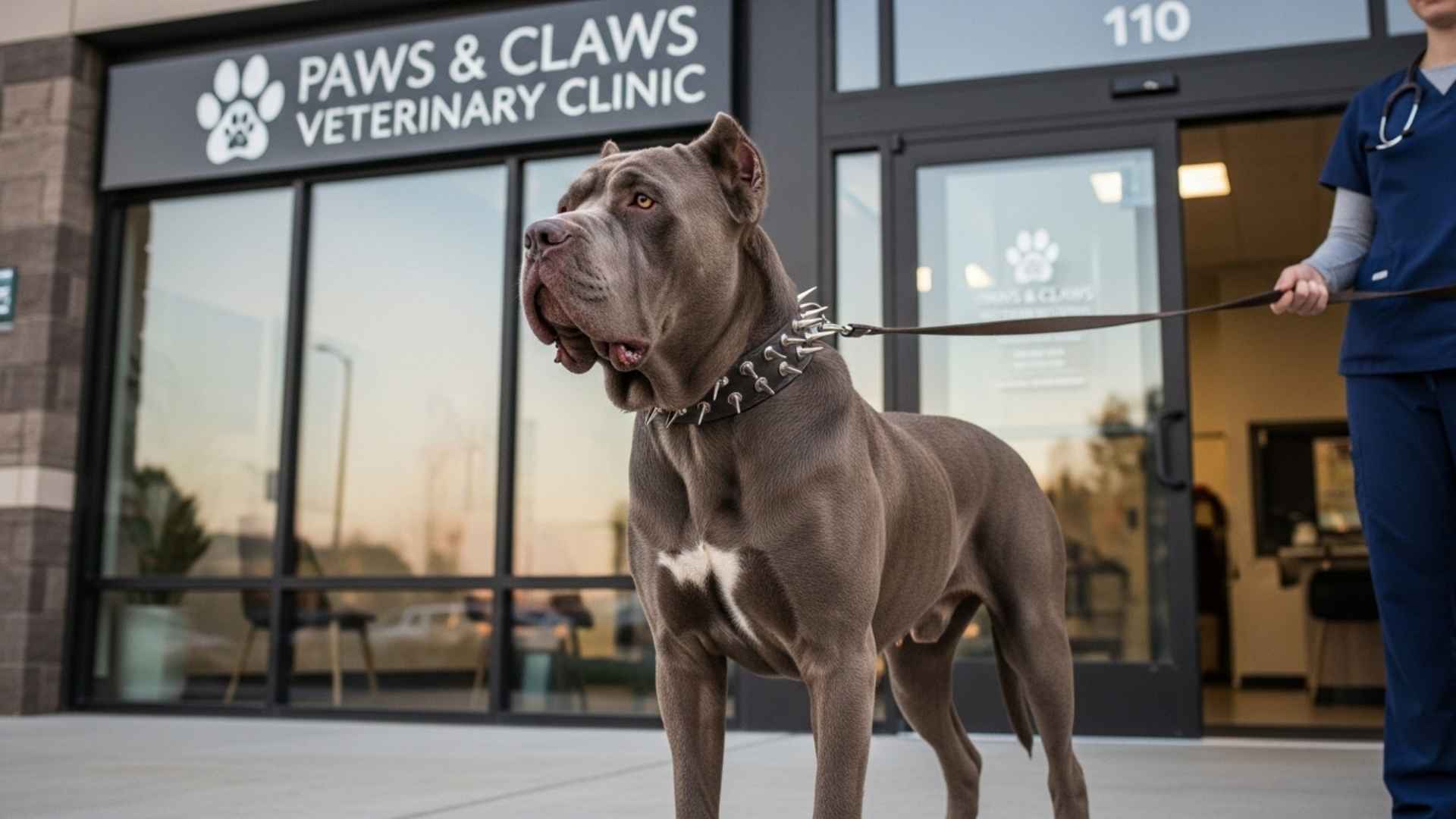Do you run a veterinary clinic and worry about keeping your staff, clients, and animals safe? Security is often overlooked in busy clinics, but the right guard dog can provide both protection and comfort. While security cameras help, a loyal canine guardian adds an unmatched sense of reassurance.
Not all dog breeds are suited for a veterinary setting. You need a companion with a protective nature, strong intelligence, and the ability to stay calm around other animals. With proper training, some breeds can excel in both safeguarding the premises and interacting with patients.
Each dog breed in this list brings unique strengths. Whether it’s their intimidating presence, quick thinking, or natural protective instincts, these dogs are more than guardians; they’re loyal partners who help create a secure, welcoming environment for everyone in your clinic.
In this guide, we explore the top guard dog breeds for veterinary clinics and how to ensure they thrive in their protective role.
Best Guard Dog Breeds For Veterinary Clinics
1. German Shepherd
Breed Overview
The German Shepherd is one of the smartest dog breeds, known for loyalty, confidence, and courage. Originally bred for herding, this large dog is now a top choice for police work, search and rescue, and security roles.
Ideal Role in a Veterinary Clinic
German Shepherds excel in environments requiring both protection and calmness. Their adaptability allows them to remain steady in normal and threatening situations.
Temperament and Behavior
Loyal to their owners, they are naturally protective without being unnecessarily aggressive. They get along well with other pets when properly socialized from a young age.
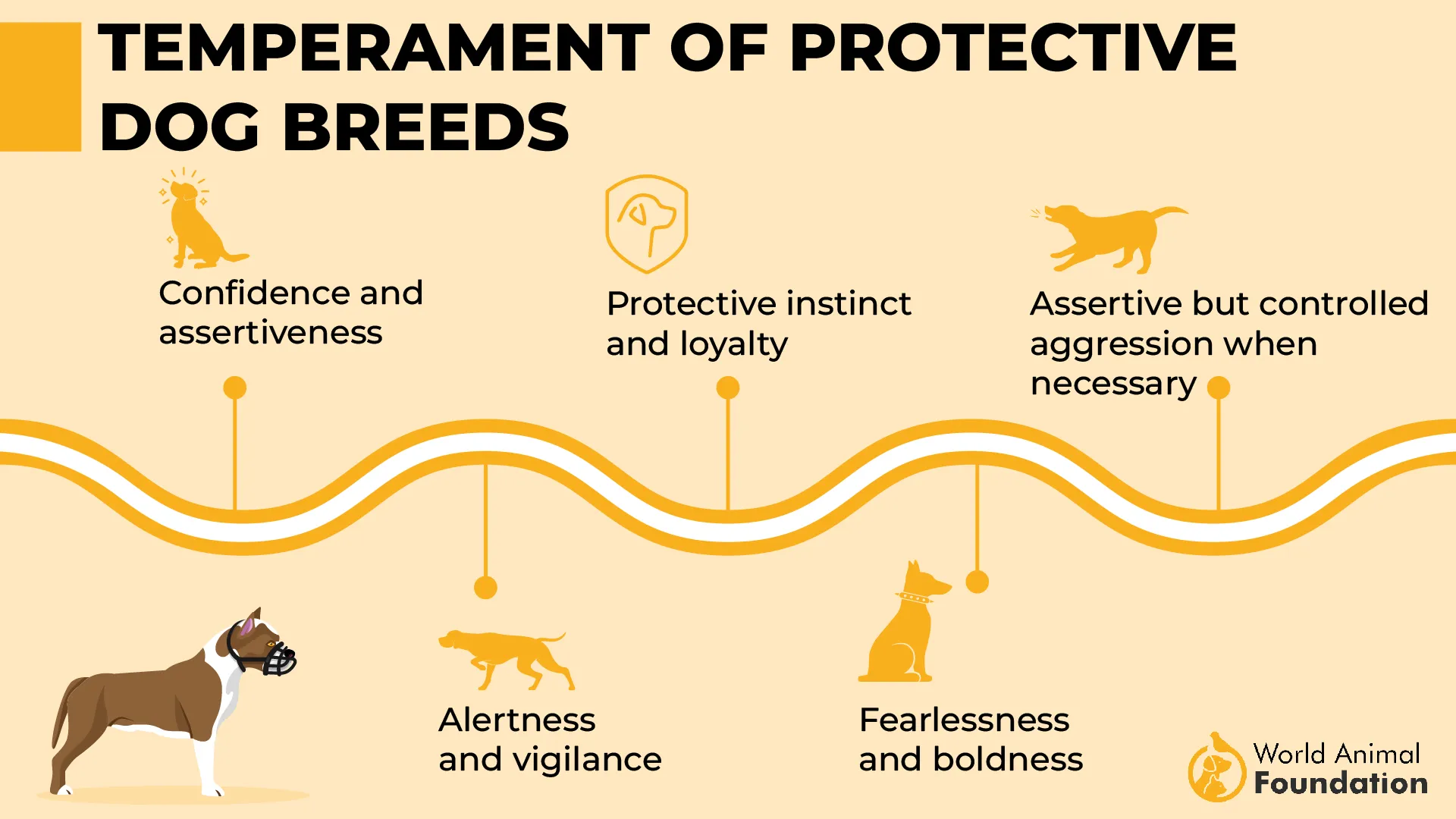
Training and Management
Obedience training is essential for this energetic breed. Start training early to ensure they distinguish between routine activity and real threats. Their intelligence and large stature make them an excellent guard dog for clinics.
Key Care Tips
They require daily exercise, mental stimulation, and a balanced diet. Regular grooming keeps their coat healthy, and consistent training ensures they stay focused and obedient.
2. Boxer
Breed Overview
The Boxer is an energetic breed known for its playful nature and protective instincts. Originally bred for hunting, it has a strong build and quick reflexes.
Ideal Role in a Veterinary Clinic
With their alertness and loyalty, Boxers can protect without creating a tense atmosphere. They are also naturally affectionate, which clients appreciate.
Temperament and Behavior
Boxers are patient with small children and adapt well to family life, making them a good fit for clinics with a community feel. They get along well with other animals when socialized early.
Training and Management
This energetic breed requires regular exercise and proper training to stay focused. Their loud bark serves as a strong deterrent to intruders. Boxers’ combination of protection and friendliness makes them excellent guard dogs for veterinary clinics.
Key Care Tips
Boxers need daily exercise to burn energy and avoid boredom. A nutritious diet supports their active lifestyle, and routine vet visits help prevent breed-specific health issues.
3. Staffordshire Bull Terrier
Breed Overview
The Staffordshire Bull Terrier is a muscular, medium-sized breed with a big heart. Despite a bad reputation in some circles, they are gentle, loyal, and great with kids.
Ideal Role in a Veterinary Clinic
Staffies are calm in busy environments, making them ideal for clinics. Their protective instincts ensure they guard both people and other pets.
Temperament and Behavior
Despite their tough appearance, they have a soft spot for their owners. With early socialization, they coexist peacefully with other animals in the clinic.
Training and Management
Proper training from a young age helps channel their natural guarding instincts effectively. They make excellent watchdogs with the right training and care.
Key Care Tips
They require moderate exercise, mental stimulation, and regular grooming. Keep them mentally engaged with toys or light agility activities to maintain balance and focus.
Moreover, with short fur, grooming is minimal, apart from claw clipping, as Terriers’ claws seem to grow quickly.
4. Bullmastiff
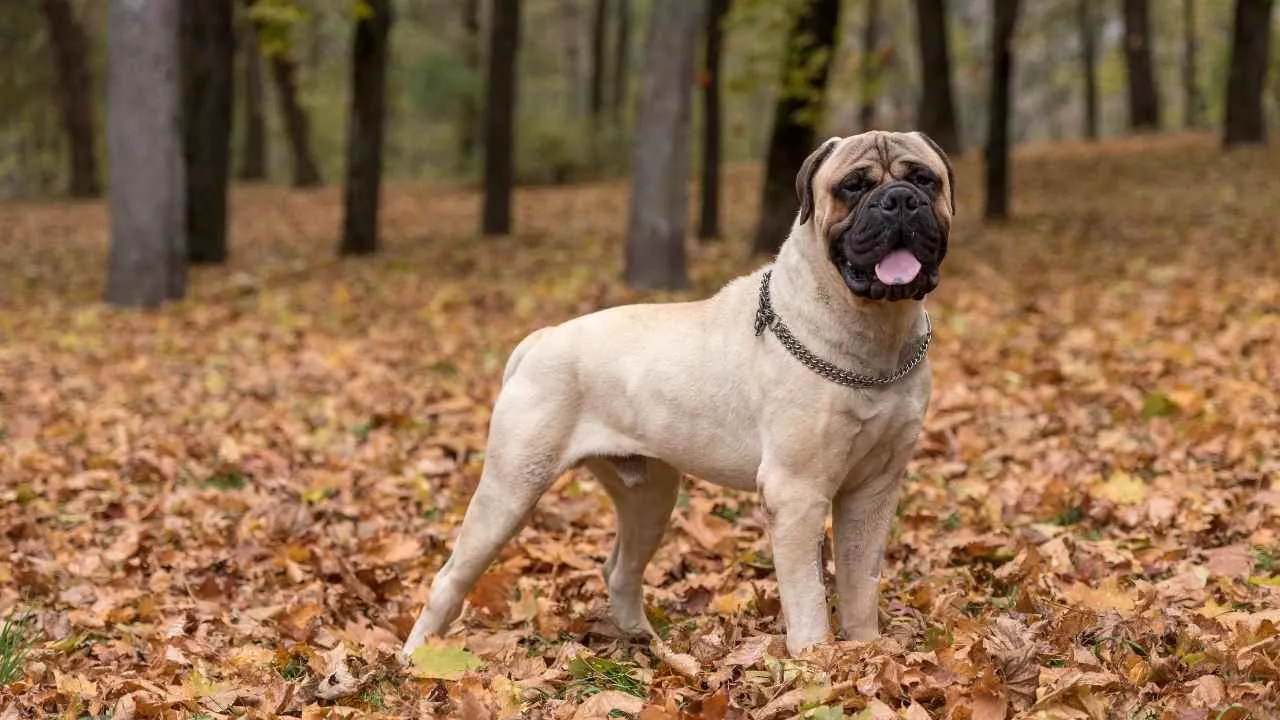
Breed Overview
The Bullmastiff, often called the “gentle giant,” combines a large stature with a calm demeanor. Originally bred to guard estates, they’re powerful yet controlled.
Ideal Role in a Veterinary Clinic
Its size alone is often enough to deter intruders, yet its calm demeanor keeps the clinic environment relaxed.
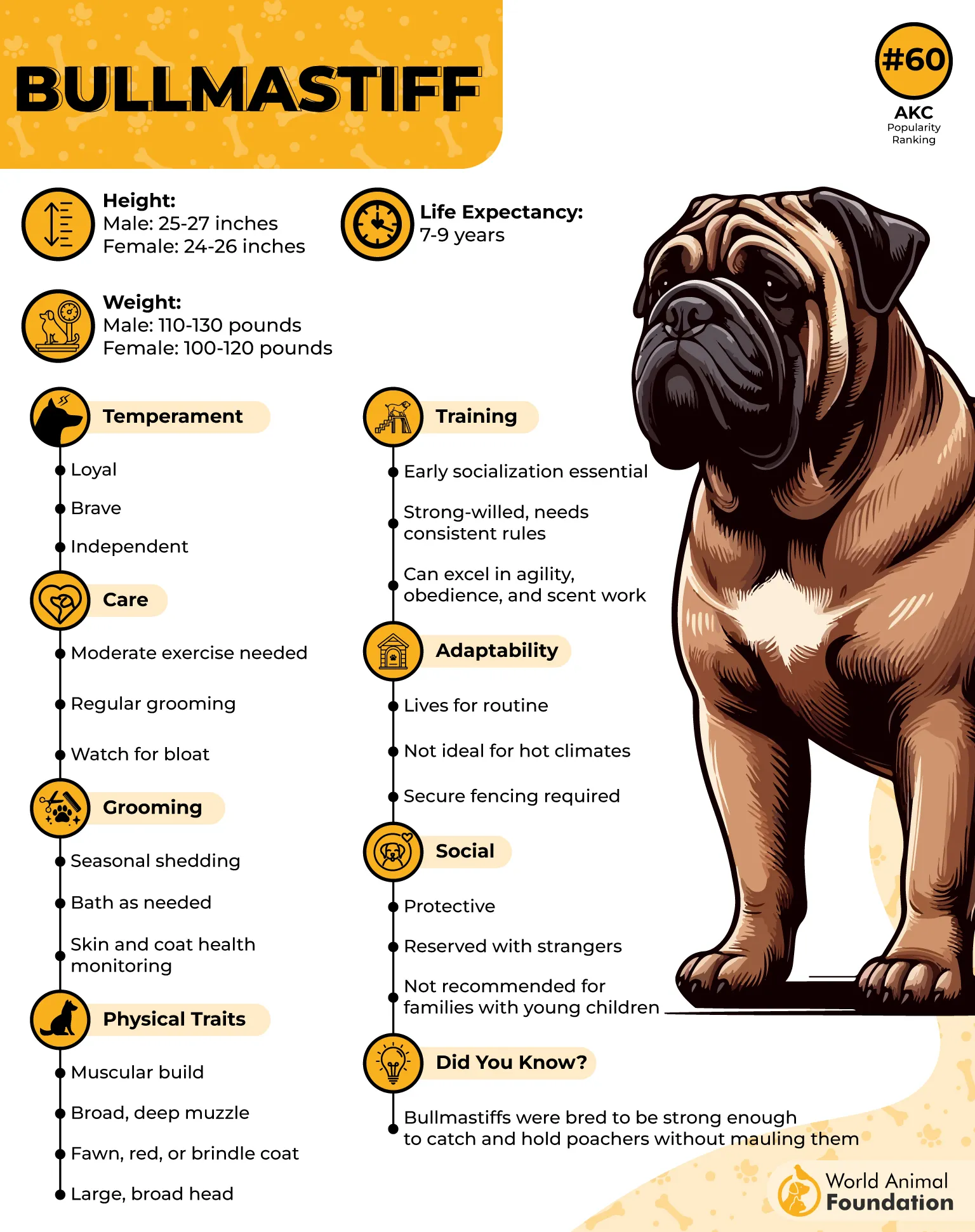
Temperament and Behavior
Bullmastiffs are loyal and patient, making them safe around children and other pets. They respond well to clear boundaries and confident leadership.
Training and Management
As per WebMD, Bullmastiffs are highly energetic and active dogs, so they enjoy daily exercise and activities like brisk walks and outdoor games. Start training early to reinforce obedience and good behavior.
Despite being a large dog, they adapt well to indoor environments. Their physical strength, loyalty, and gentle nature make them one of the best guard dog breeds for clinics.
Key Care Tips
They need moderate exercise to maintain health, plus a balanced diet to prevent weight gain. Regular vet checks are essential for large-breed joint health.
5. Belgian Malinois
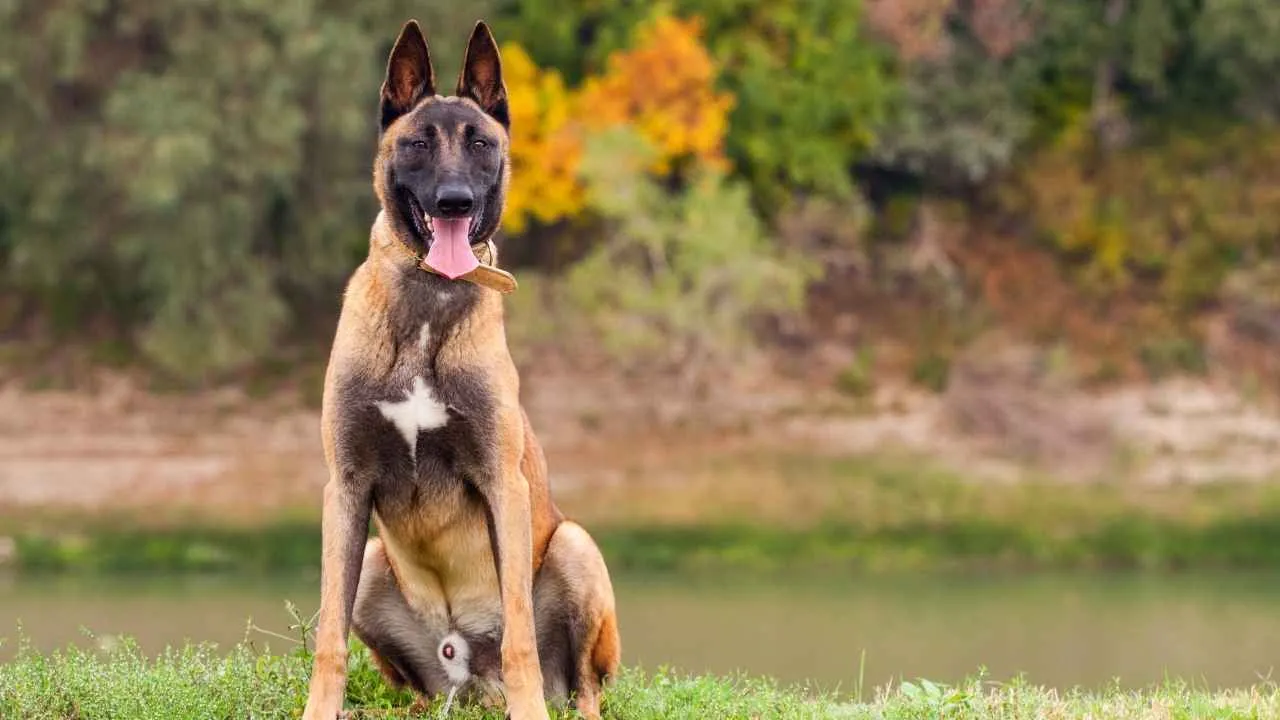
Breed Overview
The Belgian Malinois is one of the best guard dog breeds for working roles. Extremely intelligent and fiercely loyal, they excel in protection dogs and service work.
Ideal Role in a Veterinary Clinic
Its natural protective instincts make it an excellent choice for guarding a clinic while being affectionate with trusted people.
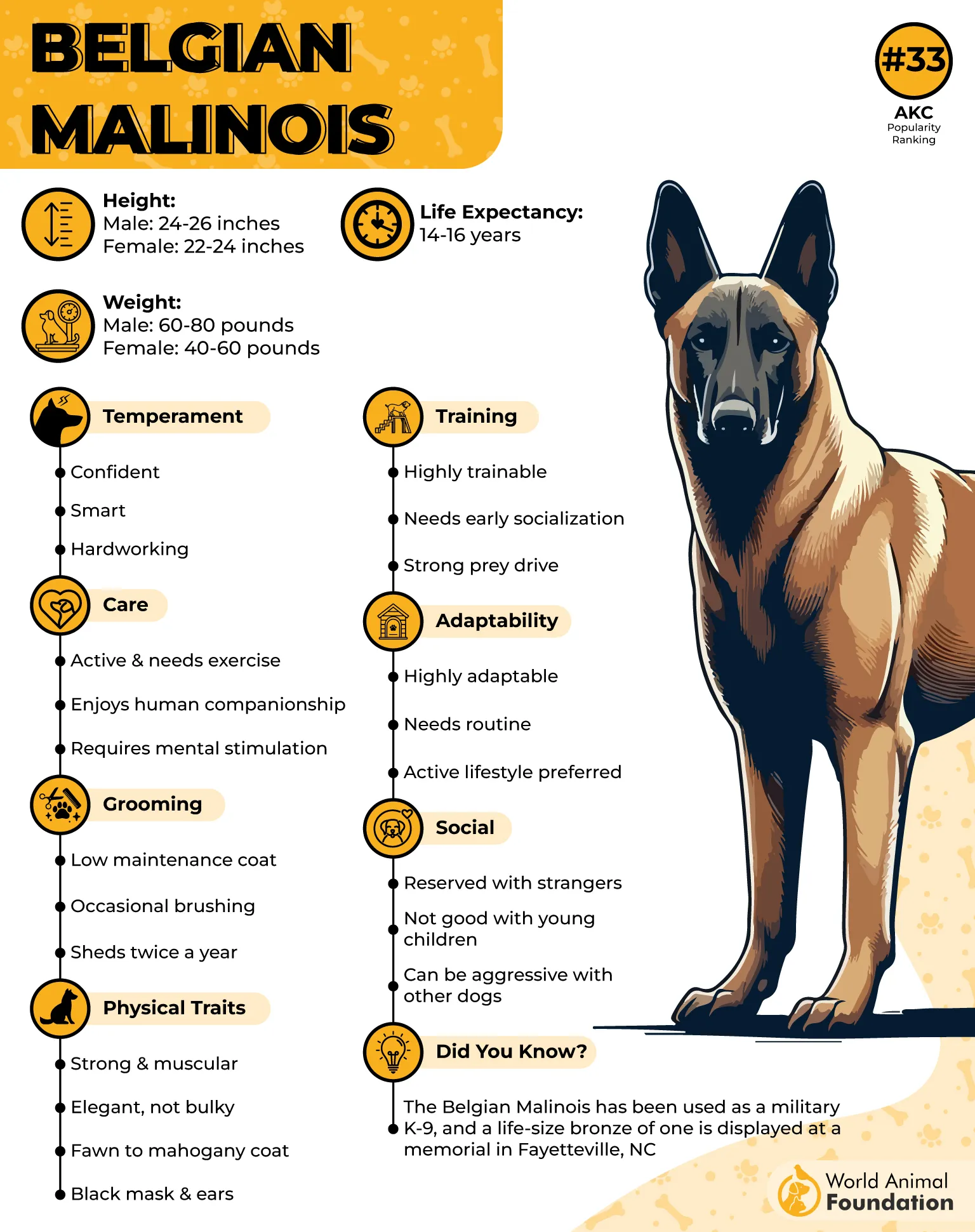
Temperament and Behavior
Belgian Malinois dogs are highly energetic and require both physical and mental stimulation daily. They can differentiate between safe and suspicious situations when well-trained.
Training and Management
The right training is crucial to channel their high energy level productively. Early socialization ensures they interact positively with other animals. With obedience training and daily exercise, the Belgian Malinois becomes a reliable protection dog and devoted companion.
Key Care Tips
Daily exercise is non-negotiable. Mental stimulation, agility exercises, and consistent routines keep them happy and balanced. Groom regularly to manage their short coat.
6. Doberman Pinscher
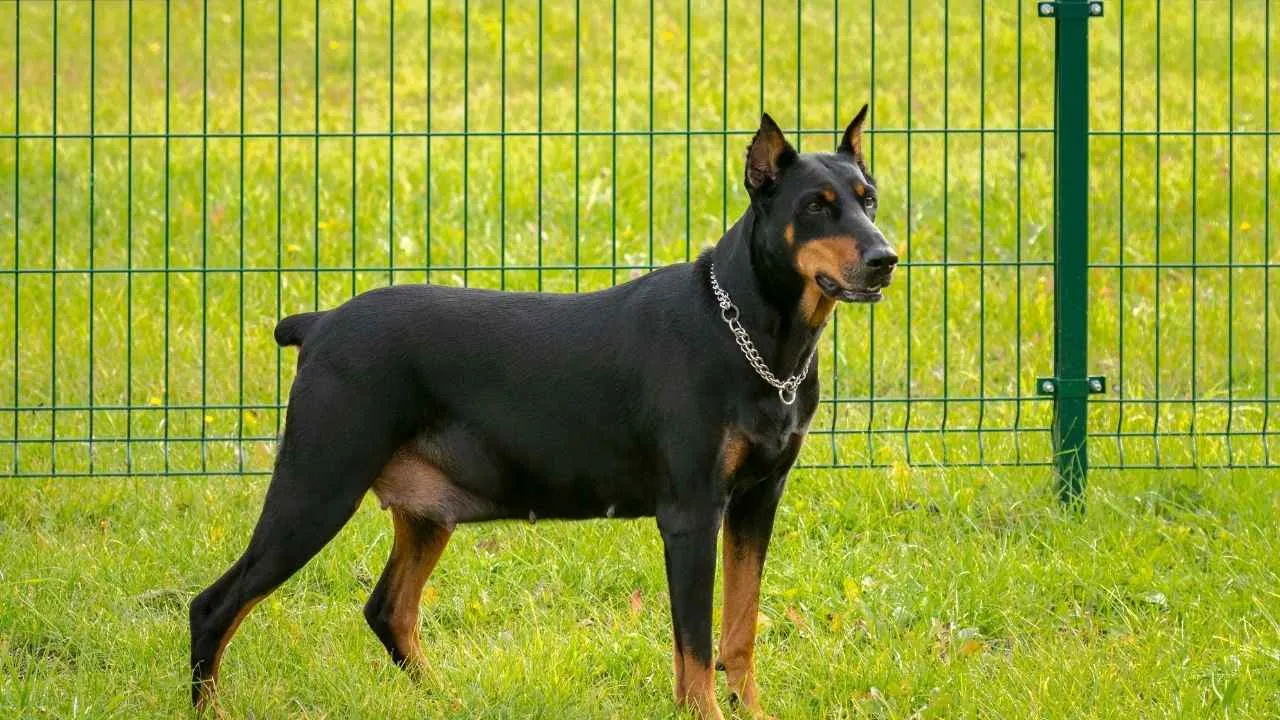
Breed Overview
The Doberman Pinscher is one of the smartest dog breeds, prized for its speed, loyalty, and alertness. As per Purina, the Dobie is muscular and athletic, with a sleek and regal appearance. Traditionally, their tails are docked and ears cropped. Dobermans have short, sleek coats.
Ideal Role in a Veterinary Clinic
Dobermans excel in environments requiring both companionship and security. They form strong bonds with owners and staff in the veterinary clinics.
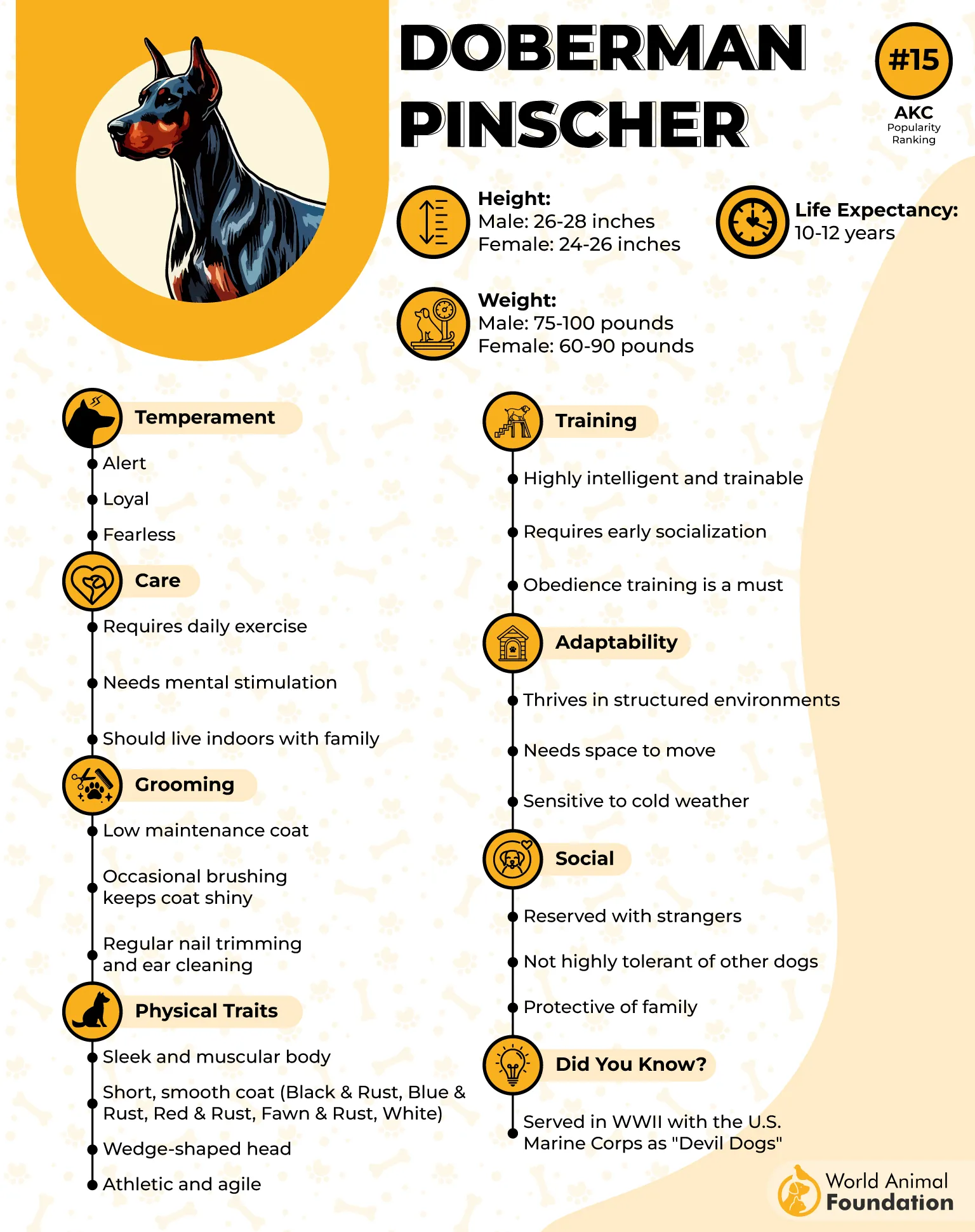
Temperament and Behavior
They are naturally affectionate toward family and protective against intruders. With early socialization, they adapt well to clinics with other pets.
Training and Management
Dobermans need proper training from an early age to channel their protective instincts. Obedience training helps them respond quickly in emergencies.
Key Care Tips
Provide regular exercise, a nutrient-rich diet, and structured routines. Mental challenges like puzzle toys help keep them sharp and engaged.
7. Giant Schnauzer
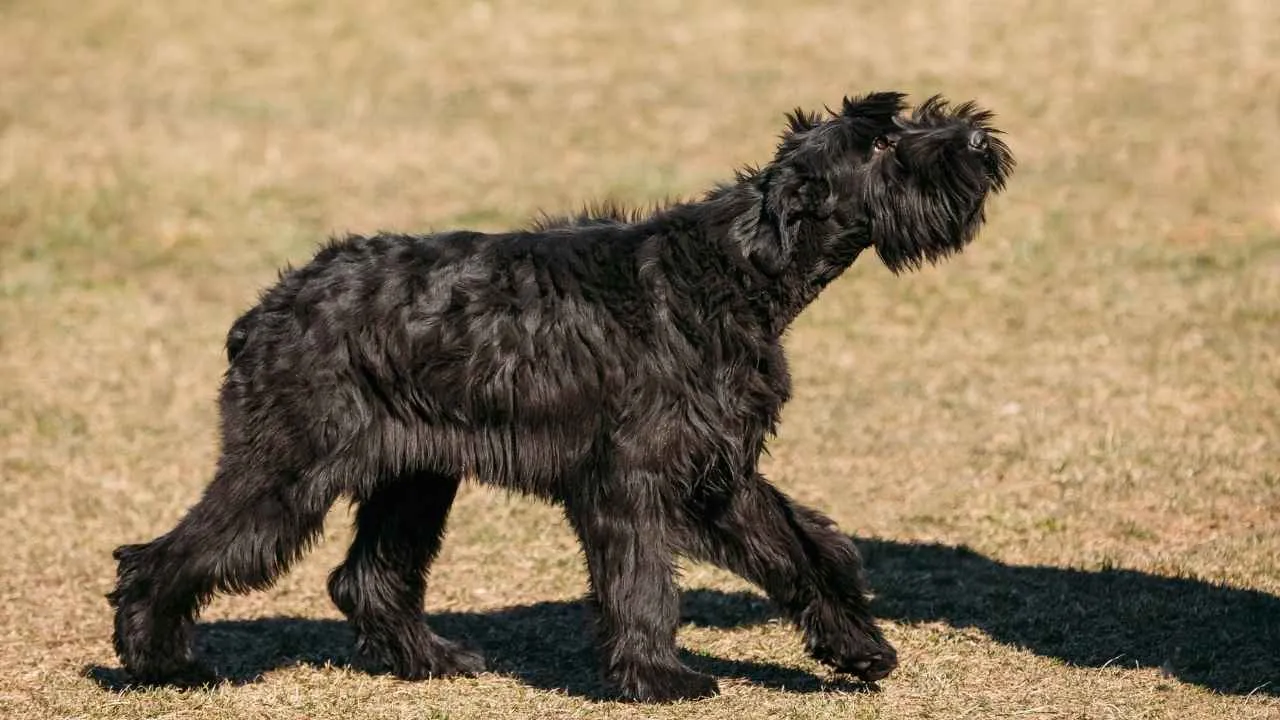
Breed Overview
The Giant Schnauzer is a powerful, large dog originally bred for driving cattle. It’s intelligent, loyal, and known for its strong protective instincts.
Ideal Role in a Veterinary Clinic
This breed’s intimidating stature and alertness make it a great deterrent to potential threats, while still being affectionate to familiar people.
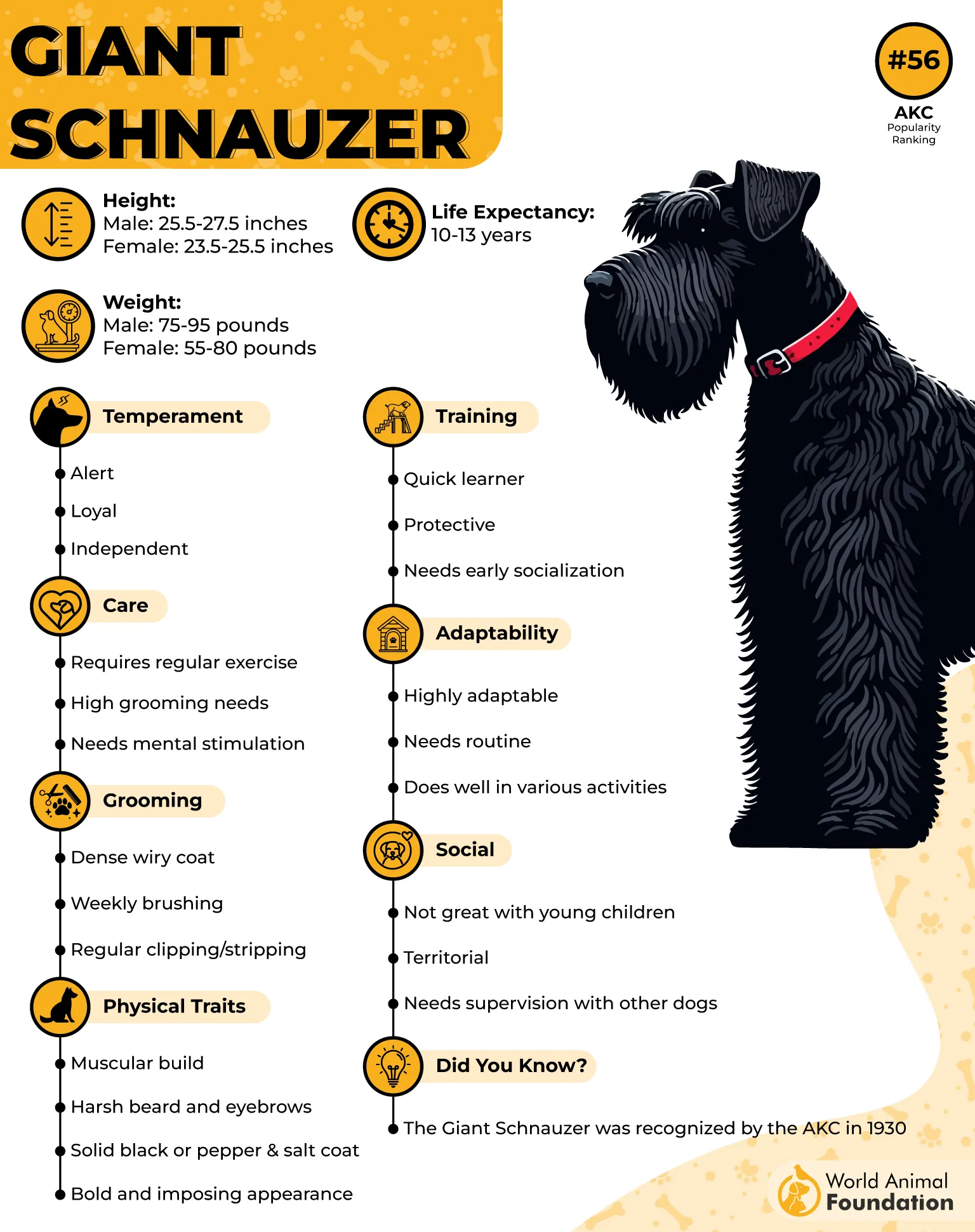
Temperament and Behavior
They are protective of their family and can be wary of strangers. Early socialization helps them adapt well to other pets and adjust in busy settings.
Training and Management
Obedience training should begin at an early age. They need consistent rules and regular reinforcement to stay disciplined.
Key Care Tips
Daily exercise, mental stimulation, and regular grooming are highly important. They benefit from having a “job” to keep their mind active.
Conclusion
Selecting the right guard dog breed for your veterinary clinic is about finding the perfect balance between protection and compassion. Your ideal guardian should be alert enough to deter threats yet calm enough to work around patients and visitors without stress.
No matter which breed you choose, training and early socialization are non-negotiable. These steps ensure your dog understands the difference between everyday activity and real danger.
With commitment and proper care, your guard dog will become more than just security; they’ll be a trusted member of your clinic family, offering both safety and a reassuring presence for staff, clients, and the animals.


